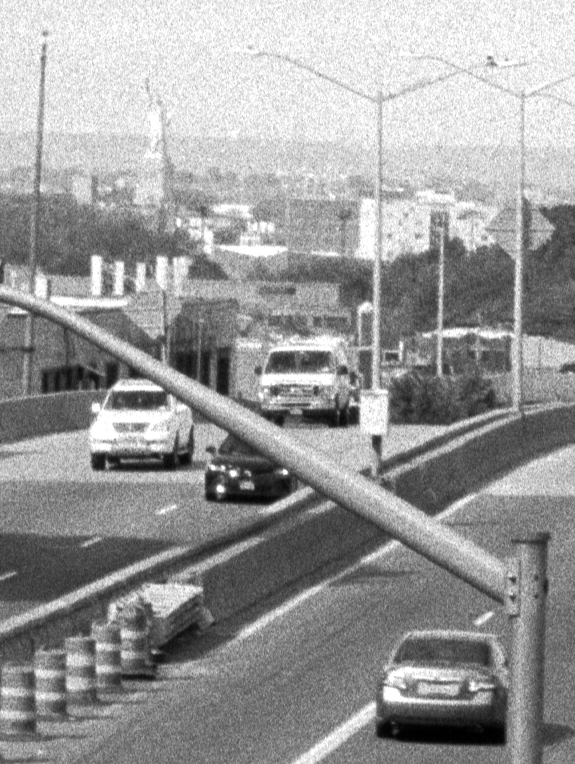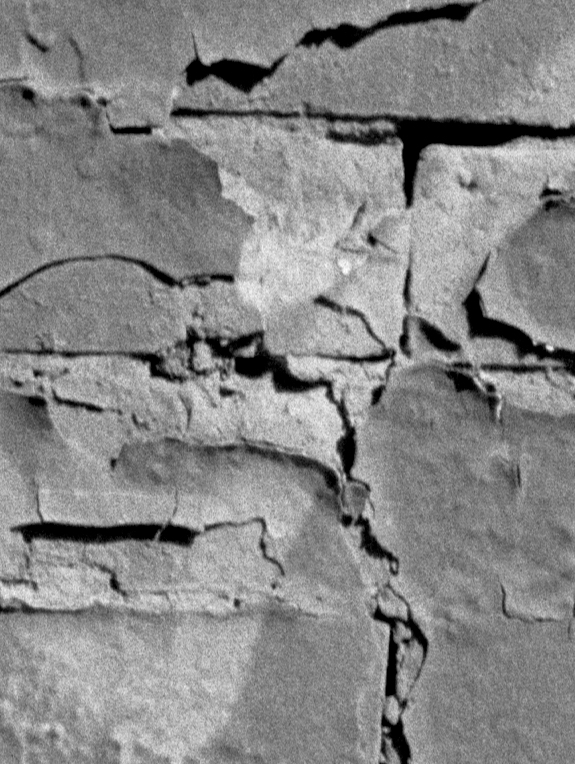Several years ago, a friend of my partner gave me the gift of a Fujica GS645S. This is one of the “roll bar” Fujifilm medium format cameras. Originally released in 1984, it joined two other GS645 cameras, the GS645 with a 70mm lens, and the GS645W with a 45mm lens. The GS645S sits comfortably in the middle, with a 60mm (35mm equivalent in 35mm) lens. More information on this series of cameras is here: http://camera-wiki.org/wiki/Fuji_GS645_Professional_series
I shot a partial roll of TMAX 100 in it, and then the top deck pretty much fell apart. The external shell of the body is plastic, and some of the glue had dried out. The viewfinder and rangefinder window fell out. I kept it together for a while with some inelegant gaffer tape patching-up, but I ended up just not using it.
Fast forward a few years, and I decided to get it repaired along with another Fujifilm MF camera (more on the latter in a future post). I used Southern Photo in North Miami Beach, and I couldn’t be happier with the service and the results. They sent back the partially exposed roll of TMAX which I thoughtlessly left in the camera! I remembered to remove the camera strap but didn’t remove the film.
This is not the story of that roll. I haven’t developed it yet. This is the story of the roll I put through it to test it.
Have you shot a medium format Fujifilm camera? Have you shot through a Fujinon lens? Unbelievable, spectacular, sharp as a razor, gorgeous. You really want a film like TMAX with a lens like this, and you want a developer that minimizes grain. Diafine usually isn’t that developer, but it plays well enough with TMX to get good results.
I shot this roll at EI100. Diafine’s data sheet recommends 200, which is a stop off, but I actually had intended to develop this with something else, felt lazy, and used Diafine. Good results, but I could have done a little better.
I’m posting adjusted scans (4000dpi, Nikon LS-9000, levels adjusted) and 100% crops so you can see the detail this lens captures. Some shots are in sun, others in shade. The shady photos have much better exposure balance as you would expect.

Fujica GS645S, TMAX 100, Diafine, scan from Nikon LS-9000, adjusted levels

100% crop from above image

Fujica GS645S, TMAX 100, Diafine, scan from Nikon LS-9000, adjusted levels

100% crop of above image. Visible grain. Note Lady Liberty at top left and the bolts in the lamp post at lower right.

Fujica GS645S, TMAX 100, Diafine, scan from Nikon LS-9000, adjusted levels

100% crop of above image

Fujica GS645S, TMAX 100, Diafine, scan from Nikon LS-9000, adjusted levels

100% crop of above image

Fujica GS645S, TMAX 100, Diafine, scan from Nikon LS-9000, adjusted levels

100% crop from above scan

Fujica GS645S, TMAX 100, Diafine, scan from Nikon LS-9000, adjusted levels (the lovely Daryl aka @visit_guyana on Instagram)

100% crop from above scan
Fujifilm medium format cameras, and actually all medium format cameras, are an insanely great value on the used market today. Most medium format cameras were either built before the planned obsolescence era or were built for professionals, so most of them just work. This particular camera cost about $200 to fix, but it was a gift, so I was OK with that. The Yashica-Mat in Daryl’s hands above was $100.
Development: 4 minutes each in Diafine bath A and B (extended time because it’s cold in the pipes!); 1 minute tap water “stop bath;” 4 minutes TF-4 fixer; 10 minutes rinse; 1 minute agitation in 2 drops LFN wetting agent. Hang-dried 2 hours; scanned in Nikon LS-9000. Editing (minimal) in Adobe Photoshop. Always scan ASAP so you don’t have to edit dust!
Let me know what you think in the comments.
Very impressive. Wow.